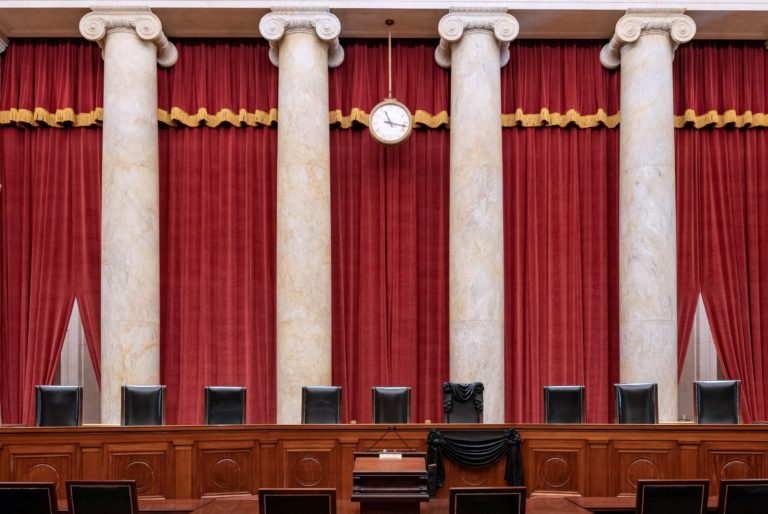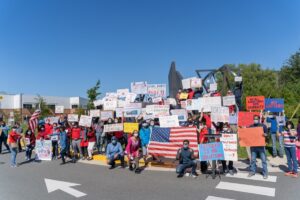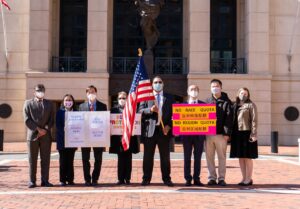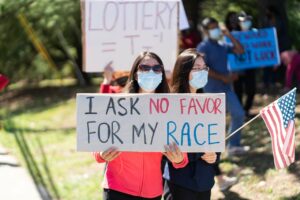Emergency orders and the Supreme Court’s ‘shadow docket’

Schoolchildren are not known for their patience. But sometimes they have good reason to want something not next year, not next month, but now. Such as when their futures are on the line before the Supreme Court.
The slow Supreme Court process
In normal circumstances, it takes more than a year for the Supreme Court to decide a case. The process is complicated. A party losing a case in a lower court must first ask the Supreme Court to grant certiorari review. A half-year or more can pass by the time all the supporting and opposing briefs are filed and the Court decides whether to take the case in the first place.
Then, if the case is in the lucky one percent of all requests that are granted, the case reaches the merits stage. That means more briefs from both sides, plus any amicus (“friend of the court”) briefs, followed by oral argument and finally by an opinion from the Court many months later.
It’s an intentionally slow and deliberate process, designed to give all sides enough time to present first-rate arguments, and the Court plenty of time to ponder the issues and to fully explain its decision in as many pages as it finds necessary.
But sometimes slow and deliberate isn’t appropriate.
The ‘shadow docket’
When it’s imperative that the Court issue a decision on an expedited basis, the Court can resort to an alternative process invoking its emergency powers. This is not a new process—the Court employed it in 1953 to delay the execution of Julius and Ethel Rosenberg, for example—but in 2015, a University of Chicago law professor labeled it the Court’s “shadow docket,” a name that stuck. And the Court has resorted to this mechanism with increasing frequency in the past few years.
Here’s how the so-called “shadow docket” works in practice: If you believe a lower court has erred in your case, and there isn’t enough time to let the usual slow and deliberative process play out, you can file an emergency request with the relevant “circuit justice” on the Supreme Court. (Each of the nine Justices is responsible for at least one circuit.) That Justice can either make a decision on your application independently, or refer it to the Court. We’ve seen lower court decisions reversed in this way in cases involving President Trump’s travel ban, border wall, and immigration rules, as well as cases on COVID rules, abortion, bathrooms, elections, and the death penalty.
Some have objected to the term “shadow docket.” In a speech last September, Justice Samuel Alito criticized the media for the term and its insinuation that the emergency powers are somehow “sinister” and evidence that the Court has “been captured by a dangerous cabal that resorts to sneaky and improper methods to get things done.”
Senator Sheldon Whitehouse, on the other hand, has used the shadow docket as evidence of a “culmination of a decades-old scheme by right wing-wing donor interests to capture the Court.” After the Court issued an emergency order to allow a Texas abortion statute to remain in place, Justice Elena Kagan criticized the shadow docket as “unreasoned, inconsistent and impossible to defend.”
But it isn’t easy to get an emergency order from the Court. To prevail, an applicant for an emergency order has to demonstrate there is a “fair prospect” that it will ultimately win on the merits of the case, and that irreparable harm will result from denial of the request. It must also overcome a presumption that the lower court was correct. It helps if an applicant can make a case that the underlying issues are ones that the Court will probably grant for review on the merits.
It’s a high burden to overcome. Just as the Court has granted a number of emergency requests, it has also denied many more.
From COVID-19 bans on religious gatherings issued by the governors of Nevada and California to business closures in Pennsylvania, the Court has declined to grant emergency stays to lower court orders upholding the state actions, although it has ruled against some states, once the religious bans reached the merits stage. And when the United States solicitor general sought emergency relief from the Court dozens of times during the Trump administration, the Court granted relief in a majority, but hardly all, of those cases.
The Court’s most recent use of its shadow docket came earlier this month when the Court on April 6 issued another controversial emergency order that restored a Trump administration rule on water pollution permitting that limited the ability of states to block projects for reasons not related to water pollution.
While the Biden administration worked on a new rule, a lower court vacated the Trump rule. Invoking its emergency power, the Court restored the original Trump rule. Justice John Roberts and the three remaining liberal Justices dissented, arguing that there really was no emergency. Apparently, however, a majority of the Justices and those seeking permits thought otherwise.
Our emergency request on the TJ admissions case
On April 8, PLF filed an emergency request with the Supreme Court to reverse the Fourth Circuit’s stay of a trial court’s order that halted the Fairfax County School Board’s racist admissions policy at Thomas Jefferson High School for Science & Technology.
The students who are being denied admission because of their race don’t have a year to wait; they have only until the end of this April, because that’s when the school district will send out letters of acceptance to next year’s freshman class.
To recap, for years students were admitted to the honors-winning high school if they could demonstrate high academic potential based on excellent grades and stellar test scores. But in the view of the board, that led to too many students of Asian descent and not enough other minorities being admitted.
So, in a process that the district court labeled as being “infected with talk of racial balancing from its inception,” the board adopted a new policy designed to reduce the number of Asian American students.
It wasn’t an outright quota, but a process garbled with statistical legerdemain designed to sneak an improper racial component into the selection process. A group of parents calling themselves “Coalition for TJ” sued the board and argued that the intent behind the racial balancing violated the Equal Protection Clause of the United States Constitution.
In September of 2021, many months before reaching his decision, the trial judge warned the board that he was likely to rule against it, and that the board should “be prepared” to abandon its new admissions protocols. When the trial court ruled against the board in late February, the board claimed that it didn’t have enough time to go back to the old merits-based admissions program before it was set to mail acceptance letters on April 30. The judge who gave the warning months before didn’t buy it, and he ordered the board to get rid of its new discriminatory policy.
But the board then asked the Fourth Circuit to stay the lower court’s decision.
In a March 31 two-to-one decision, the appellate court agreed with the board, allowing it to continue with its racially biased policy. As a result, we’ve asked the Supreme Court to invoke its emergency powers and vacate the Fourth Circuit’s stay in order to force the board to base next year’s admissions on merit, not race.
Getting an emergency order for the Supreme Court is a difficult process, and there are never any guarantees, no matter how good the case. Getting into an elite high school like Thomas Jefferson in Fairfax County is also a difficult process with no guarantees, even for an excellent student. But when the admissions process is weighed down by the thumb of sneaky and improper racial bias, then it is time once again for the Court to use its emergency powers so all students can get an honest chance at admission.







